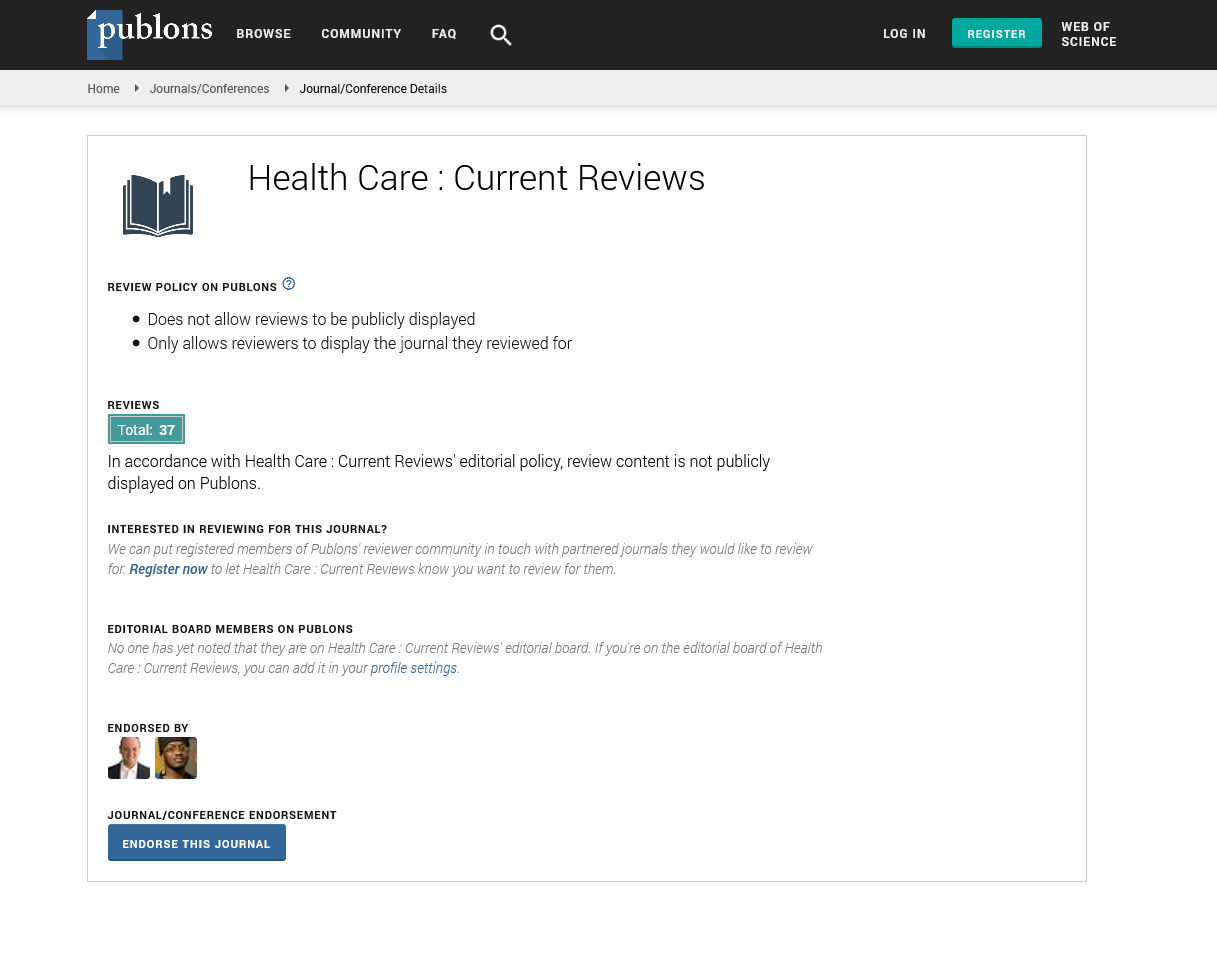Indexed In
- Open J Gate
- Academic Keys
- RefSeek
- Hamdard University
- EBSCO A-Z
- Publons
- Geneva Foundation for Medical Education and Research
- Google Scholar
Useful Links
Share This Page
Journal Flyer

Open Access Journals
- Agri and Aquaculture
- Biochemistry
- Bioinformatics & Systems Biology
- Business & Management
- Chemistry
- Clinical Sciences
- Engineering
- Food & Nutrition
- General Science
- Genetics & Molecular Biology
- Immunology & Microbiology
- Medical Sciences
- Neuroscience & Psychology
- Nursing & Health Care
- Pharmaceutical Sciences
Abstract
Cardiovascular risk prediction, glycemic control, and determinants in diabetic and hypertensive patients in Massawa hospital, Eritrea: Cross-sectional study on 600 subjects
Berhe Tesfai
Background: Hypertension and diabetes are key determinants of cardiovascular risks. The classical risk factors for the development of cardiovascular disease in subjects with DM are poor glycemic control, obesity, dyslipidemia, and hypertension. As with many developing countries, Eritrea is facing the burden of non-communicable diseases (NCDs) as a result of current epidemiological and nutritional transitions. According to National Health Information System of Eritrea, DM is one of the leading causes of morbidity and mortality, mainly in adults. The objective of this study was to calculate 10-year incidence of cardiovascular risk, determine cardiovascular risk factors, and evaluate how diabetes and hypertension are controlled in patients in Massawa Hospital, Eritrea. Methods: This was a hospital-based cross-sectional study using census sampling. A checklist and interview were used as data-collection tool from October 10 to November 20, 2020. Written consent was obtained from each study participant before starting the study. All patients with DM, hypertension or both, with complete clinical records and on regular follow-up at Massawa Hospital’s NCD clinic, regardless of residence or age were included; and those who had incomplete medical records, communication disabilities, or mental disorders were excluded. Ethics approval was obtained from the Ministry of Health Research and Ethical Clearance Committee. WHO charts (age, sex, systolic blood pressure, DM, smoking, and cholesterol level) were used to predict Cardiovascular risk in patients with DM and hypertension. Descriptive statistics were used, and results were presented in percentages and tables, then p<0.05 was considered significant. Results: A total of 600 patients were enrolled in the study, dominated by the Tigrigna (58.7%) and Tigre (26.7%) ethnic groups. About half the patients (58.8%) had a body-mass index of 18–25 kg/m2, with abdominal circumference of <95 cm (74%). Only 8% and 9.3% of the patients were smokers and alcohol consumers. A quarter of the patients (24.7%) reported vision problems, and 2.8% and 0.8% had a history of stroke and amputation, respectively.
Published Date: 2021-11-10; Received Date: 2021-10-14

